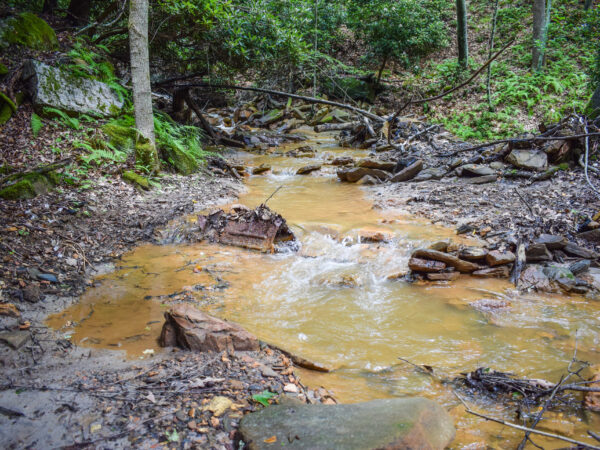
From lead pipes to PFAS, drinking water contamination is a major issue plaguing cities and towns all around the Great Lakes. Cleaning up contaminants and providing safe water to everyone is an ongoing public health struggle.
Keep up with drinking water-related developments in the Great Lakes area.
Click on the headline to read the full story:
Minnesota:
- Nitrogen fertilizer restrictions in Minnesota begin September 1 – Successful Farming
The Minnesota Department of Agriculture is reminding farmers and landowners that beginning Sept. 1, 2020, the application of nitrogen fertilizer in the fall and on frozen soil will be restricted in areas vulnerable to groundwater contamination.
This will also apply to Drinking Water Supply Management Areas with elevated nitrate levels. Vulnerable groundwater areas include coarse-textured soils, karst geology and shallow bedrock.
New York:
- Lawsuits over road salt pollution casualty of New York deadline – Adirondack Explorer
Two years ago, a dozen or so Adirondack homeowners prepared to sue the state of New York for polluting their drinking water. They had evidence that road salt dumped by the state Department of Transportation was flowing into their wells, making their water unsafe to drink and reducing their property values.
Their lawsuit never got off the ground. In New York, residents who want to take the state to court often have just 90 days to file a lawsuit. Such rigid filing deadlines undermined the residents’ case and have insulated the state in other cases where the DOT has said it is likely polluting water supplies with road salt.
Ohio:
- State extends deadline for Toledo to make water treatment plant improvements – The Toledo Blade
Calling Toledo’s request for an eight-month delay “acceptable,” the Ohio Environmental Protection Agency is giving the city until April 30 to substantially complete installation of a more advanced type of treatment technology at its Collins Park Water Treatment Plant.
At a cost of $55 million, the upcoming ozone technology is a cornerstone of some $500 million of improvements the city began phasing in after a blue-ribbon panel of experts assessed needs in response to the algae-driven water crisis that made tap water unsafe to drink or touch for nearly three days in 2014. The state agency originally wanted the new technology operational by 2017.
Pennsylvania:
- Drilling is stopped after leaks develop along Mariner East pipeline. One is affecting Chester’s Marsh Creek Lake – The Philadelphia Inquirer
Drilling fluid used in Sunoco Pipeline LP’s Mariner East project in Chester County leaked into Marsh Creek Lake at a state park of the same name on Monday — one of three incidents in recent days along the pipeline construction project.
The liquid used for drilling, which typically contains bentonite clay and water, is not normally hazardous, though environmental groups say it could contain other chemicals. The Clean Air Council estimated that 1,000 gallons of the drilling fluid were released into Marsh Creek Lake, which also serves as a drinking water reservoir.
- Pennsylvania Regulators Won’t Say Where 66% of Landfill Leachate w/ Radioactive Material From Fracking is Going…“It’s Private” – Public Herald
In Pennsylvania, the final destination of 66 percent of liquid waste from 30 municipal landfills accepting fracking’s oil and gas waste remains unknown. Oil and gas waste from fracking contains high concentrations of Technically Enhanced Naturally Occurring Radioactive Materials, and wherever this radioactive TENORM waste is stored, rain carries water-soluble radionuclides such as Radium-226 through the landfill to create what’s known as leachate – the landfill’s liquid waste. This TENORM-laden leachate is commonly sent to Waste Water Treatment Plants that are not equipped to remove it before it’s dumped into rivers.
Wisconsin:
- Proposed mine faces mounting troubles – Wisconsin Examiner
The controversial proposed Back Forty open pit metallic sulfide mine on the Michigan-Wisconsin border has suffered major financial and permitting setbacks due to the ongoing COVID-19 pandemic and increasing public concerns over the safety of tailings dams to store mine waste. The proposed mine, would be located next to the Menominee River, which flows into Lake Michigan, and has raised concerns about potential water pollution.
United States:
The U.S. Environmental Protection Agency announced a new grant program to help protect children in tribal communities from lead in drinking water at schools and childcare facilities. Authorized by the Water Infrastructure Improvements of the Nation Act, EPA is making $4.3 million available to support the Lead Testing in School and Child Care Program Drinking Water Tribal Grant Program.
- EPA rule to reduce lead plumbing materials finalized – Water Finance & Management
In July, the U.S. Environmental Protection Agency announced a final rule to reduce lead in plumbing materials used in public water systems, homes, schools and other facilities. The lead-free final rule significantly limits the lead content allowed in plumbing materials (e.g., pipes, fittings, and fixtures) used in new construction and replacement of existing plumbing. Specifically, the new rule reduces the percentage of lead content allowed in these materials from eight percent to 0.25 percent in accordance with the Reduction of Lead in Drinking Water Act. The final rule also requires that manufacturers or importers certify that their products meet the requirements using a consistent verification process.
The United States Department of Agriculture is investing $462 million to modernize critical drinking water and wastewater infrastructure across rural America. USDA is funding 161 projects through the Water and Waste Disposal Loan and Grant Program. These investments will benefit 467,000 residents. All eight Great Lakes states are among the states receiving funding.
Read more drinking water headlines on Great Lakes Now:
Drinking Water News Roundup: lead in Pittsburgh, NY stream protection bill
Drinking Water News Roundup: Ohio water shutoffs, lead exposure from private wells
Climate change threatens drinking water quality across the Great Lakes
Can new crop of Great Lakes politicians turn the tide on drinking water quality?
Featured image: In this Nov. 8, 2018, file photo, a lead pipe, left, is seen in a hole the kitchen ceiling in the home of Desmond Odom, in Newark, N.J. (AP Photo/Julio Cortez)




